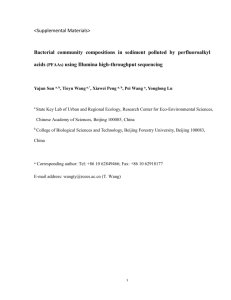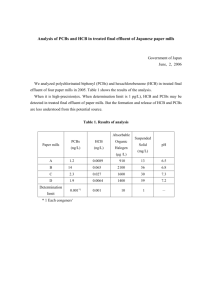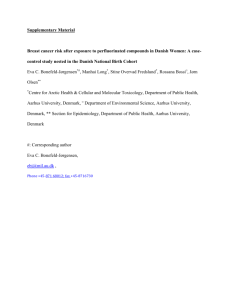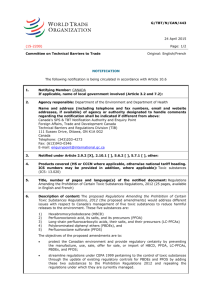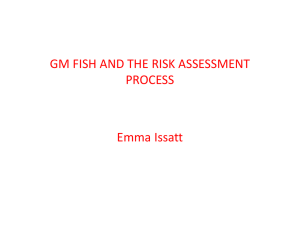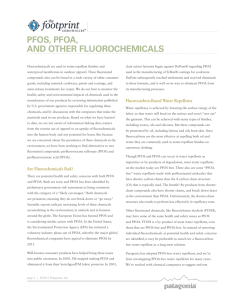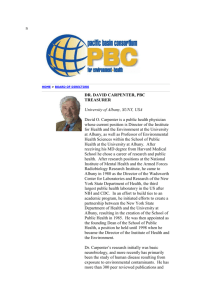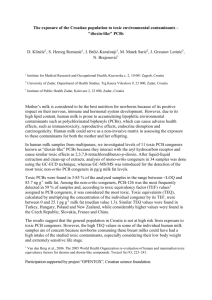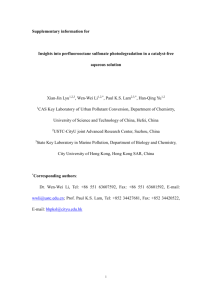O&G-IFR-Yr 4 PH O&G IFR Workshop Request 4
advertisement
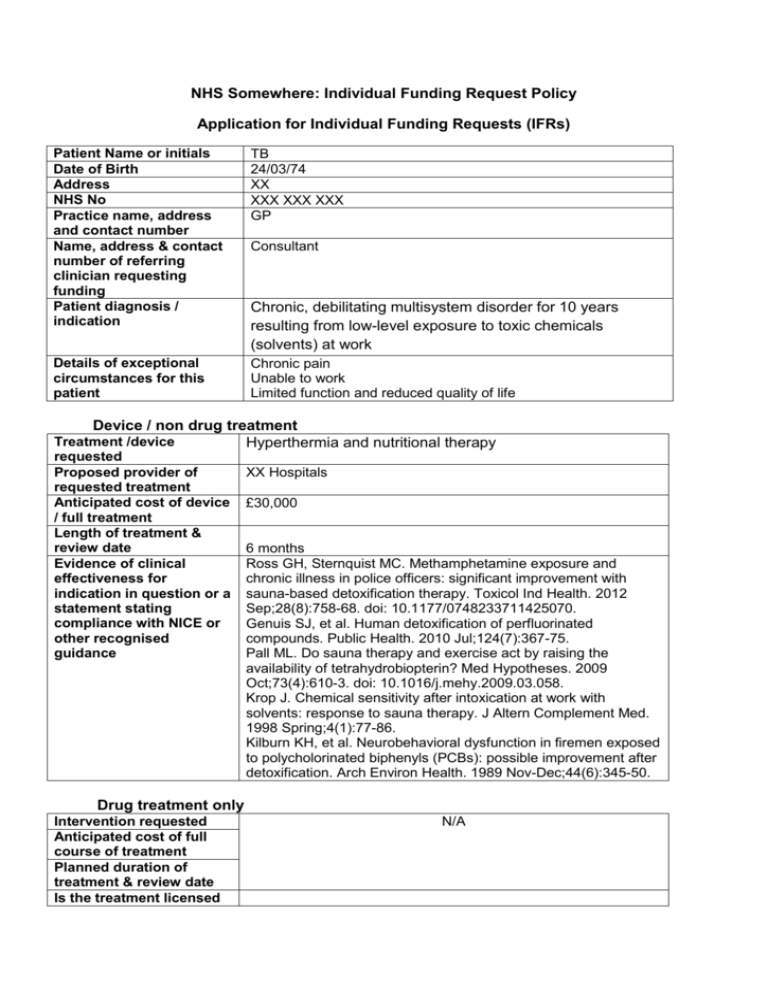
NHS Somewhere: Individual Funding Request Policy Application for Individual Funding Requests (IFRs) Patient Name or initials Date of Birth Address NHS No Practice name, address and contact number Name, address & contact number of referring clinician requesting funding Patient diagnosis / indication TB 24/03/74 XX XXX XXX XXX GP Details of exceptional circumstances for this patient Chronic pain Unable to work Limited function and reduced quality of life Consultant Chronic, debilitating multisystem disorder for 10 years resulting from low-level exposure to toxic chemicals (solvents) at work Device / non drug treatment Hyperthermia and nutritional therapy Treatment /device requested Proposed provider of requested treatment Anticipated cost of device / full treatment Length of treatment & review date Evidence of clinical effectiveness for indication in question or a statement stating compliance with NICE or other recognised guidance XX Hospitals £30,000 6 months Ross GH, Sternquist MC. Methamphetamine exposure and chronic illness in police officers: significant improvement with sauna-based detoxification therapy. Toxicol Ind Health. 2012 Sep;28(8):758-68. doi: 10.1177/0748233711425070. Genuis SJ, et al. Human detoxification of perfluorinated compounds. Public Health. 2010 Jul;124(7):367-75. Pall ML. Do sauna therapy and exercise act by raising the availability of tetrahydrobiopterin? Med Hypotheses. 2009 Oct;73(4):610-3. doi: 10.1016/j.mehy.2009.03.058. Krop J. Chemical sensitivity after intoxication at work with solvents: response to sauna therapy. J Altern Complement Med. 1998 Spring;4(1):77-86. Kilburn KH, et al. Neurobehavioral dysfunction in firemen exposed to polycholorinated biphenyls (PCBs): possible improvement after detoxification. Arch Environ Health. 1989 Nov-Dec;44(6):345-50. Drug treatment only Intervention requested Anticipated cost of full course of treatment Planned duration of treatment & review date Is the treatment licensed N/A for this indication? Has this treatment been approved / rejected by NICE? Clinical reasons for the request and relevant detailed medical history, including all treatments tried to date (include privately funded treatment) Explanation of why 1st line or alternative treatments are not suitable if applicable Summary of the clinical benefits the referrer believes the treatment will have for the specific patient: Name & address of any other clinicians involved in current patient management: Any other relevant information: Please provide declaration of interests Not considered Chronic, debilitating multisystem disorder for 10 years resulting from low-level exposure to toxic chemicals (solvents) at work Previous clinical toxicology review Previous (private) chelation therapy As above Reduced Polychlorinated biphenyl and perfluorinated compound levels Symptomatic improvements Improved Quality of life GP I declare no conflicting interests in this case Signed:…………………………………………………(requesting Clinician) Name:………….……………………………………….. Date:…………………………………………………….. Facilitators notes Poor quality of studies No evidence of benefit PBC Polychlorinated biphenyl also have shown toxic and mutagenic effects by interfering with hormones in the body. PCB have been shown to both inhibit and imitate estradiol, the main sex hormone in females. Imitation of the estrogen compound can feed estrogen-dependent breast cancer cells, and possibly cause other cancers, such as uterine or cervical. Inhibition of estradiol can lead to serious developmental problems for both males and females, including sexual, skeletal, and mental development issues. The most commonly observed health effects in people exposed to extremely high levels of PCBs are skin conditions, such as chloracne and rashes, but these were known to be symptoms of acute systemic poisoning dating back to 1922. Studies in workers exposed to PCBs have shown changes in blood and urine that may indicate liver damage. In Japan in 1968, 280 kg of PCB-contaminated rice bran oil was used as chicken feed, resulting in a mass poisoning, known as Yushō disease, in over 14,000 people. Common symptoms included dermal and ocular lesions, irregular menstrual cycles and lowered immune responses. Other symptoms included fatigue, headaches, coughs, and unusual skin sores. Additionally, in children, there were reports of poor cognitive development. There has been evidence to show crash dieters that have been exposed to PCBs have an elevated risk of health complications. Stored PCBs in the adipose tissue becomes mobilized into the blood when individuals begin to crash diet. PFC Despite the presence of some natural fluorocarbons such as tetrafluoromethane, which has been reported in rocks, man-made fluorocarbons are potent greenhouse gases. Certain fluorocarbons tend to bioaccumulate, since they are extremely stable and can be stored in the bodies of both humans and animals. Examples of fluorocarbons include PFOA (perfluorooctanoic acid) and PFOS (perfluorooctane sulfonate), frequently present in water resistant textiles and sprays conferring water resistant properties to textiles. Data from animal studies of PFOA indicate that it can cause several types of tumours and neonatal death and may have toxic effects on the immune, liver, and endocrine systems. Data on the human health effects of PFOA are however sparse. The fluorocarbon, PFOA and PFOS have both been subject for numerous investigations by the EU and the United States Environmental Protection Agency (EPA) regarding them being harmful to the environment.
